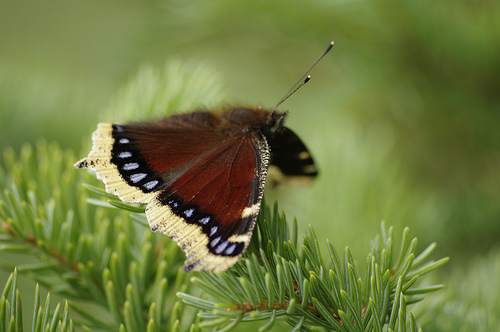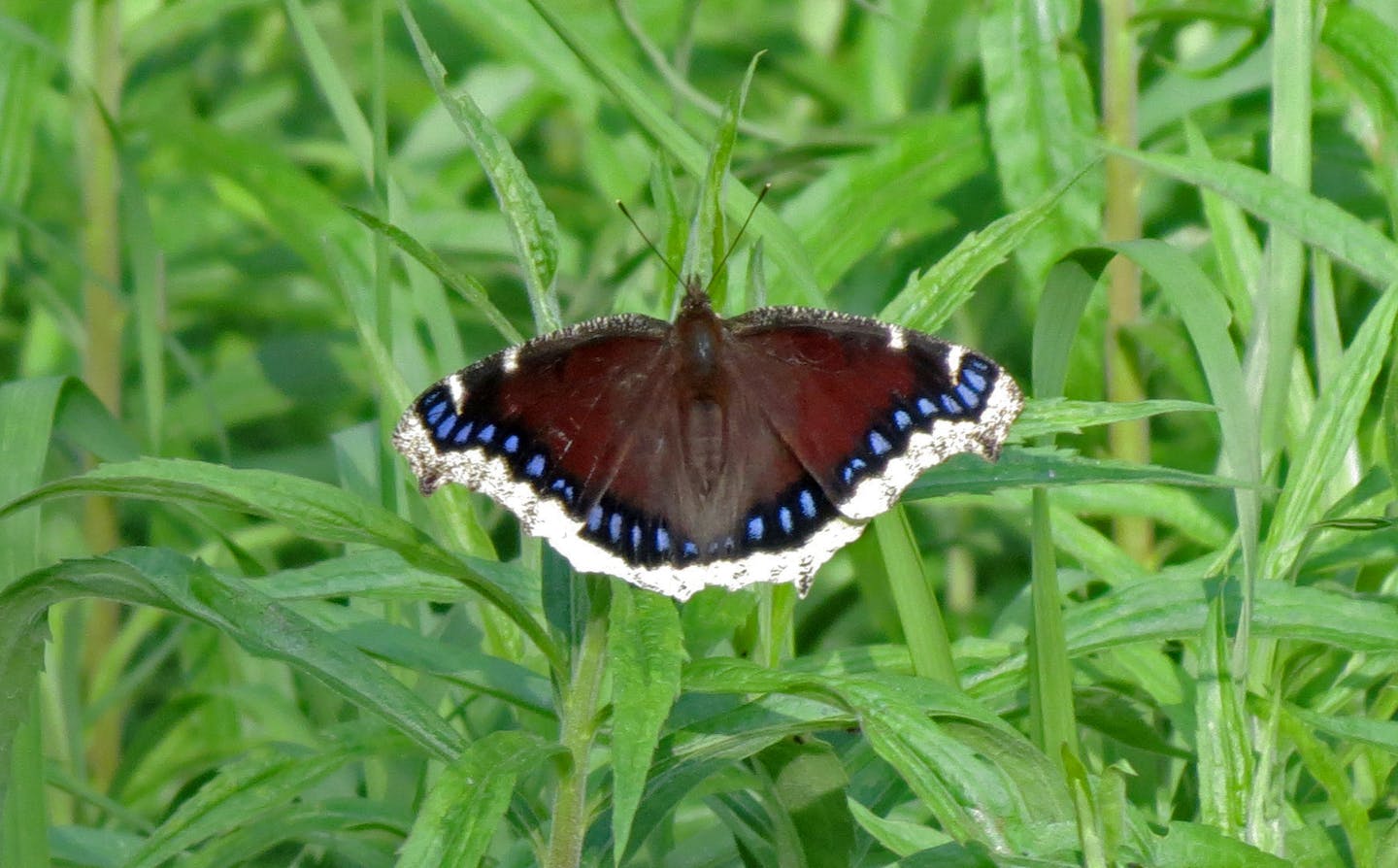How the mourning cloak butterfly bravely survives the frigid winter
Each Wednesday, One Earth’s “Species of the Week” series highlights a relatively unknown and fascinating species to showcase the beauty, diversity, and remarkable characteristics of our shared planet Earth.
Who in the animal kingdom is the most steampunk of them all? No, not the rhinoceros, the owl, or even the fly. Indeed: it’s a butterfly! Mourning Cloak Nymphalis antiopa, to be precise. The mourning cloak is a large distinctive butterfly that looks like it could have been imagined by a a retrofuturistic inventor, scientist and designer. In fact, it is one of our most widely distributed butterfly species. The mourning cloak is found throughout North America from Canada to southern South America. It is rare in the Gulf states and in Florida, but is found throughout New Hampshire.
Its wingspan is about 3 to 3.5 inches, with edges lined in a delicate and demure twilight blue polka dot design. But when its wings closed, the mourning cloak takes on a most mournful appearance, only the velvety brown-black of the back of its wings visible. In the United Kingdom it is known the cloak is known as the Camberwell beauty.
The behavior of this species is most interesting. Most mourning cloaks do not fly south when the weather gets cold – instead, they overwinter as adult butterflies, hiding away in cracks in rocks or holes in trees, and are able to shut down their bodies all winter long, effectively hibernating, in a manner known in insects as torpor. When the weather warms, the butterflies awake and re-enter the world in search of food and water. In northern areas, adults bask in the sun during almost every month of winter on warm days.

Mourning Cloack Butterfly. Image credit: Creative Commons
In early spring before many flowers and nectar are available, mourning cloaks sip running sap from tree trunks on sunny afternoons, upside down. Later in the season, they will occasionally visit flowers for nectar, but as often will gorge themselves on rotting fruit.
In mating season, females search out a host plant to lay eggs. The host plant selection is of utmost importance, as it will serve as sustenance for the caterpillars. The eggs hatch in 10 to 14 days. The resulting caterpillars then stay together, feeding on the host plant until they are fully grown, when they leave in search of a place to make their chrysalises. The caterpillar stage lasts for 14 to 18 days. The chrysalis stage lasts for 8 to 15 days. Adult butterflies can live up to 12 months.
But now, for the most steampunk behavior of all: female mourning cloaks lay their eggs in a pattern that marks them as artists and designers themselves. Each egg is a tiny sac with seven white ridges on top. The mourning cloaks place these eggs in single-layer ring clusters around the terminal twigs on host plants, adjoined in a tapestry of stars.

.png?auto=compress%2Cformat&w=200)

